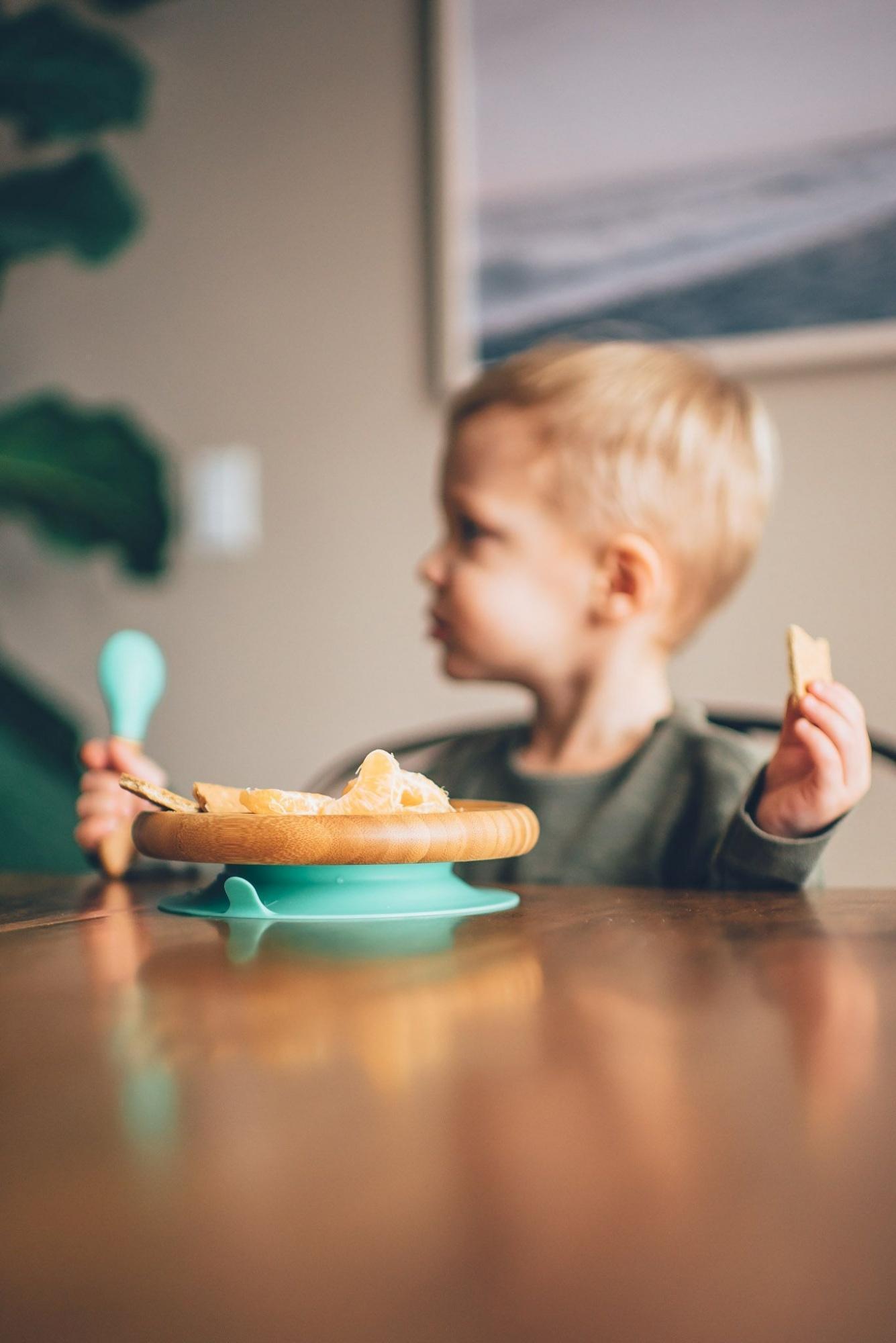We know all too well what it means to be a parent. We know there’s a lot to do in a day and it’s hard to keep up with the kids. We understand that when little ones start playing with food, ”disaster” quickly ensues.
But even if we don’t like mess and mess at mealtime, it seems that they are important in helping children learn healthy eating habits. Studies say that little ones who get dirty when they eat are likely to learn more easily and quickly.
Today we will highlight 3 reasons why we must accept and even embrace the ”mess” at mealtime and allow the little ones to play with food. We also present 7 useful tips that will improve the experience and reduce the ”chaos” .
1. There are more chances that the little ones will eat the food
Children who play with food are more likely to eat it. This is true for all foods, especially fruits and vegetables!
Recent studies have shown that most children who feel safe touching and fisting food become more familiar with those foods. The chances of those foods being ingested later increase. This does not happen overnight. If the little one plays with a dish at a table, it does not necessarily mean that he will eat that dish at that table. Over time, however, this play helps him become familiar with the foods he has come into contact with, and the chances that those foods will be consumed in the future increase substantially.
2. It is important for brain development
A 2013 study shows that toddlers who sit in highchairs and play with food learn faster about food and non-solids. This is an important step in brain development and impacts how little ones learn.
So playing with food is not just about mealtimes, and certainly not a way to upset parents, but is an important part of a child’s development.
3. The chances of the little ones getting fussy go down
Eating involves all the senses, not just taste and smell. When children are allowed to play with food, they are also using their sense of touch.
Children are naturally afraid of new foods, so allowing them to use their hands to interact with unfamiliar foods will help with familiarization.
The main goal is not to get them to eat (especially when they are very young), but to expose them to new foods and experiences. Allowing them to freely experiment with food will reduce (or even completely eliminate) their fear of new foods. And at the same time, all the child’s senses will be stimulated.






Here are some tips that will improve the experience and reduce the ”chaos”
- Place a tarp, silicone mat, or even a cloth under your child’s dining chair to make it easier to pick up spilled debris.
- Use Naaroo bowls and plates with a grippy silicone base to prevent tipping. Also use a bib with a pocket and an apron to collect spilled food.
- When the temperature allows it, try to eat outside so that the dirt washes off quickly.
- Eat at the same time as your baby so you can focus on your food and not on the mess your little one makes.
- Provides food that can be taken with the hand.
- Make sure you give him different textures to experiment with.
- Stay calm when your child messes around and don’t punish him for doing it. Just breathe! Life is a wonderful mess, so we must also embrace the dirt and let the children play.
We hope the information was helpful. You can follow us on Instagram or Facebook .



0 Comments for “3 reasons why you should let your child play with food”